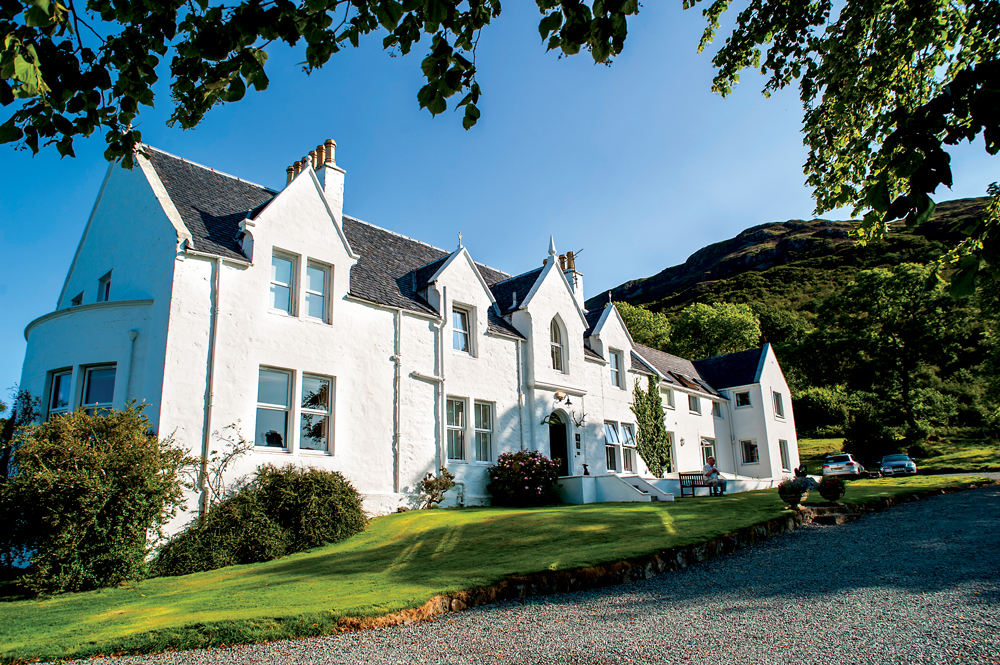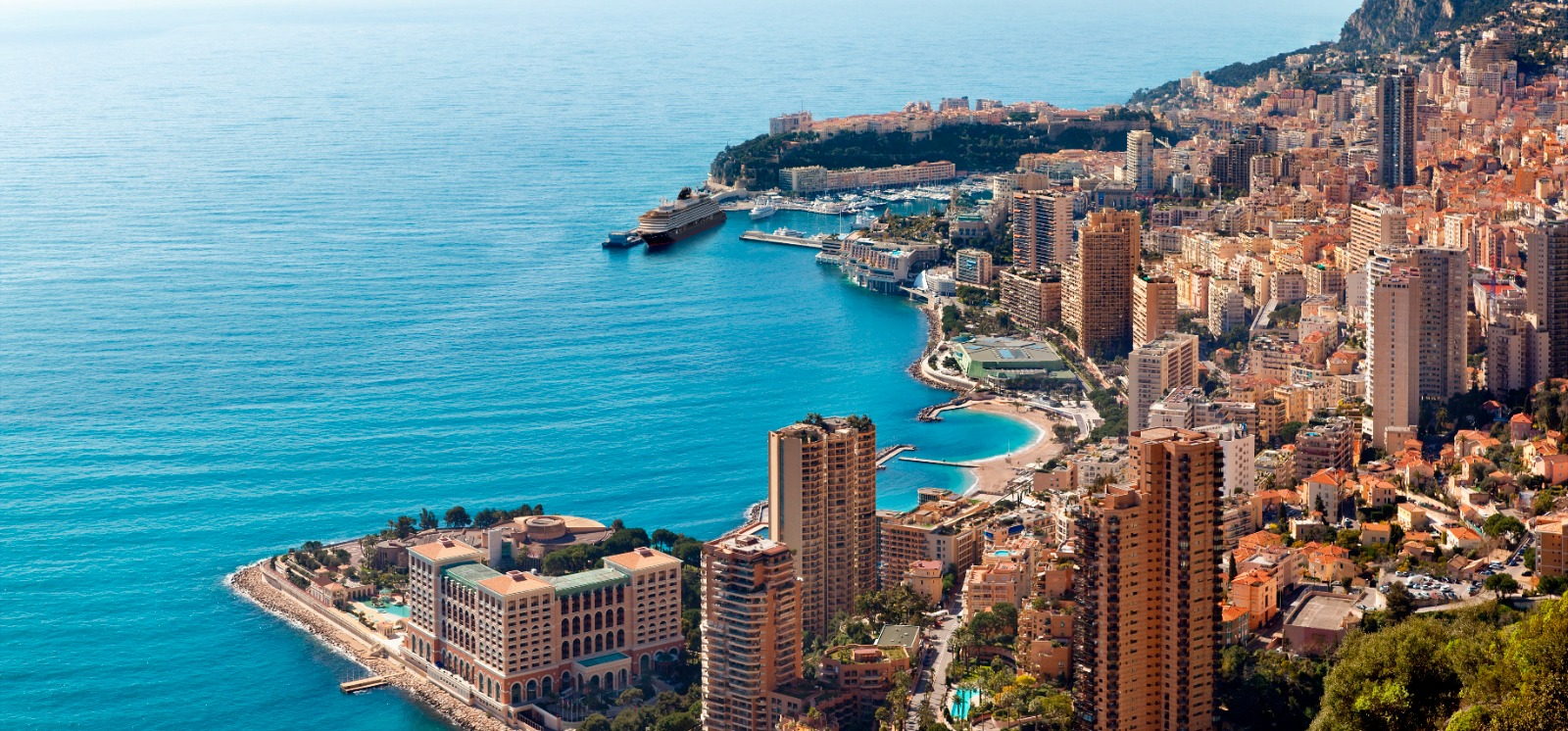Skye's the Limit of Paradise in Britain
Apr 27, 2016

Standing watch over the Isle of Skye is one of Scotland’s dreamiest castles, Eilean Donan. Perched on an islet where three sea lochs meet, it was built in the 13th century as a strongpoint in the struggle between the Scots and Norwegians for the islands of the Inner Hebrides. Today, it stands looking over the lands of Lochalsh. One of the most photographed places in Scotland, it is often pictured shrouded in mist or framed by forested mountains. If there is a quintessential Scottish castle, this is it. Over time the castle has become an icon of the Scottish Highlands, and its distinctive tower and gateway adorn countless shortbread tins and whisky bottles.
Eilean Donan is the perfect introduction to Skye. Like the castle, Skye is steeped in legend and famous for its spectacular setting and landscape. Skye lies just off the west coast of Scotland. The tempestuous Atlantic crashes against the island’s rough rocks and cliffs. Inland, huge mountains reach high above boggy moorland dotted with blue lochans, or little lakes. Visitors go home speaking of Skye’s unique light – the product of unusual weather patterns and the peculiar geography – which makes the island a photographer’s dream. The famously unsettled weather can make the island foreboding one moment, tranquil the next and, at other times, utterly mystical.
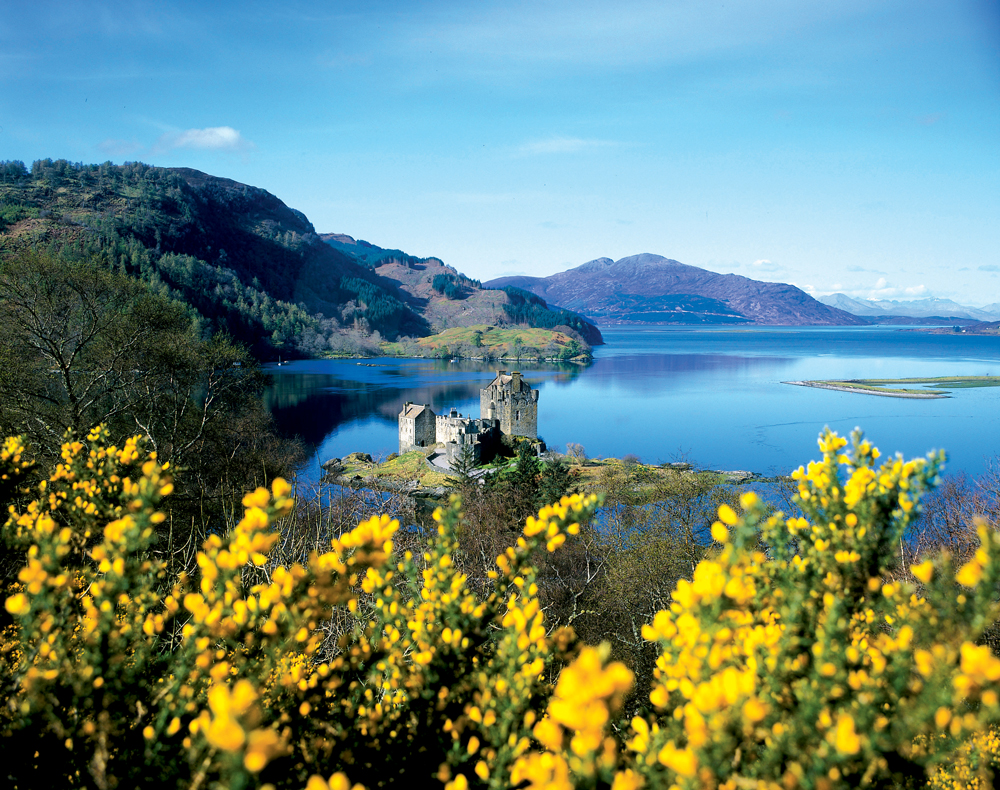
Skye is awash with ancient myths and folklore, which only enhance the island’s fairy-tale landscape and other-worldly atmosphere. Islanders of yore were superstitious maritime folk who feared the mythical blue men of the Minch, gruesome creatures who lured sailors to disaster. Only skill in verse could save seafarers from having their boats overturned by these cruel beings. There were – or are – more gentle denizens of the deep, too: mermaids who are believed to leave gifts along Skye’s indented shoreline.
The island’s most dramatic feature is also its most popular: the Cuillin range of mountains. The Cuillin’s sharp, jagged summits cast elongated, serrated shadows over the surrounding bog and heather. Among hill walkers and rock climbers, the Black Cuillin in particular is fabled for its sharply protruding peaks and steep, windswept cliffs. Only the brave and skilled scale the summit ridges, but less enthusiastic visitors can take simple scenic walks.
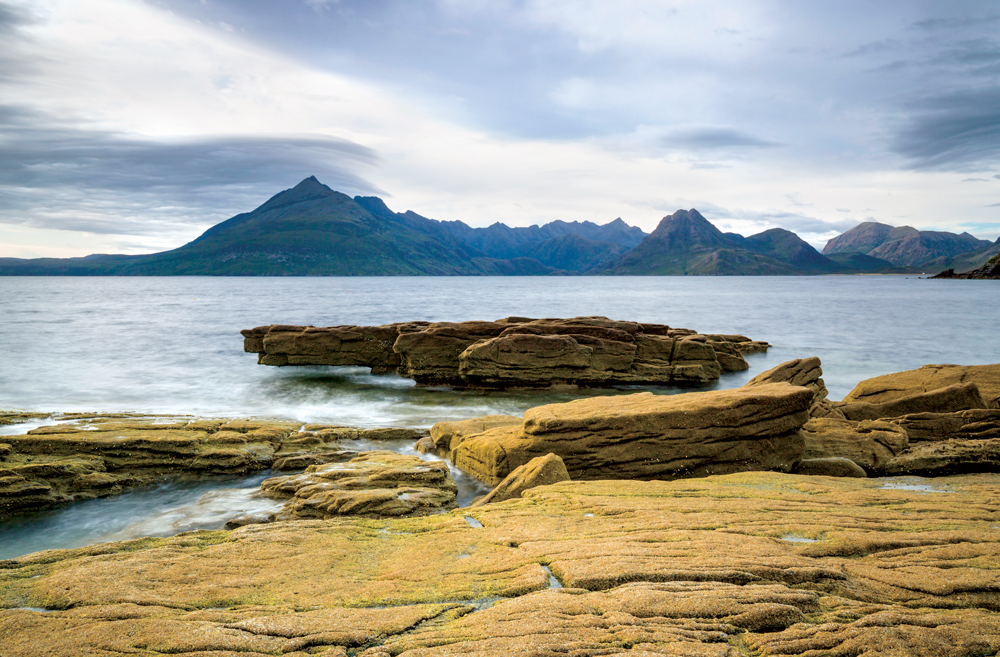
In good weather you can enjoy easy strolls around the base of the mountains. The Cuillin range is as bathed in legend as the rest of Skye. The mountains are said to be haunted by the ghost of an outlaw called MacRaing, the last known bandit on Skye. Also not to be missed is entrancing Glen Sligachan, which divides the peaks of the Red Cuillin from those of the Black Cuillin. Its rugged moorland is laced with rushing streams and bubbling springs, and just calls out to be explored on foot.
Long hikes and clean air call for good food, and Skye has plenty to satisfy the appetite. The Three Chimneys continues to win awards. The restaurant is by the sea. It is cosy and candle-lit. The couple it belongs to have been running it for 30 years. People travel from around the world to dine on the creations of Scott Davies, the head chef. Davies uses the freshest seafood, lamb farmed locally and other ingredients grown nearby. The food is outstanding. It’s easy to see how the restaurant has hung on to its three AA red rosettes for 16 years in a row.
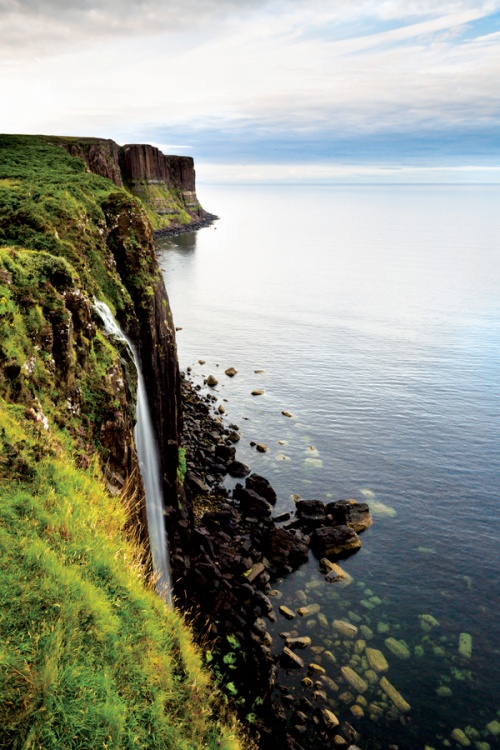
Skye is spacious, being the largest of the Inner Hebrides, and uncrowded, being home to just 10,000 people, but it is full of things to do. Most visitors see the 50-metre high pinnacle of rock known as the Old Man of Storr, which was left standing after a massive landslide eons ago. Eagle-eyed movie fans will recognise it from the recent film Macbeth, starring Michael Fassbender. Skye lends itself to filmmaking, with its intriguing light and moody landscapes. Only a handful of climbers have managed to scale the Old Man of Storr. A gentler sight, also seen in Macbeth, is the Fairy Pools, photogenic pure blue pools on the River Brittle, surrounded by tumbling waterfalls. The Fairy Pools is a fine place for swimming, if the weather allows.
It is easy to see how the unusual landscape of Skye inspired 19th century artists such as JMW Turner. Turner painted remote Loch Coruisk and the Cuillin mountains, where sea, rock and mist mingle in a spinning vortex. The landscape and island life also attract poets, writers, photographers and sculptors, some of whom have made Skye their home.
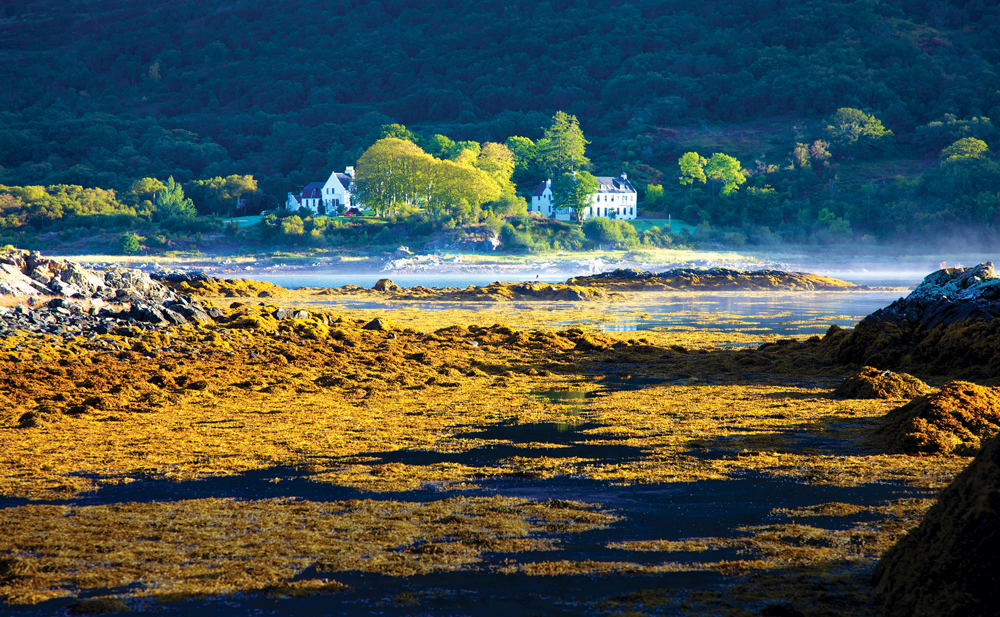
Portree is the largest town on Skye. It offers a gentle cultural hit for those who wish to give their hiking boots an afternoon’s rest. This is where you’ll find the award-winning Aros Centre. It’s a visitor centre, bookshop, theatre and cinema all in one. It is worth being here in the summer, when you can watch live video of the hidden nests of Skye’s rare sea eagles. There are also wide screens showing the island’s mind-blowing scenery.
If you are inspired to head out onto the water, there is plenty of boating to be done. Hire a boat at Elgol to view the Cuillin from the middle of Loch Coruisk, or take a boat from Portree to one of the smaller islands nearby, such as Raasay or Rona. Keep your eyes open for seals, otters, dolphins and whales.
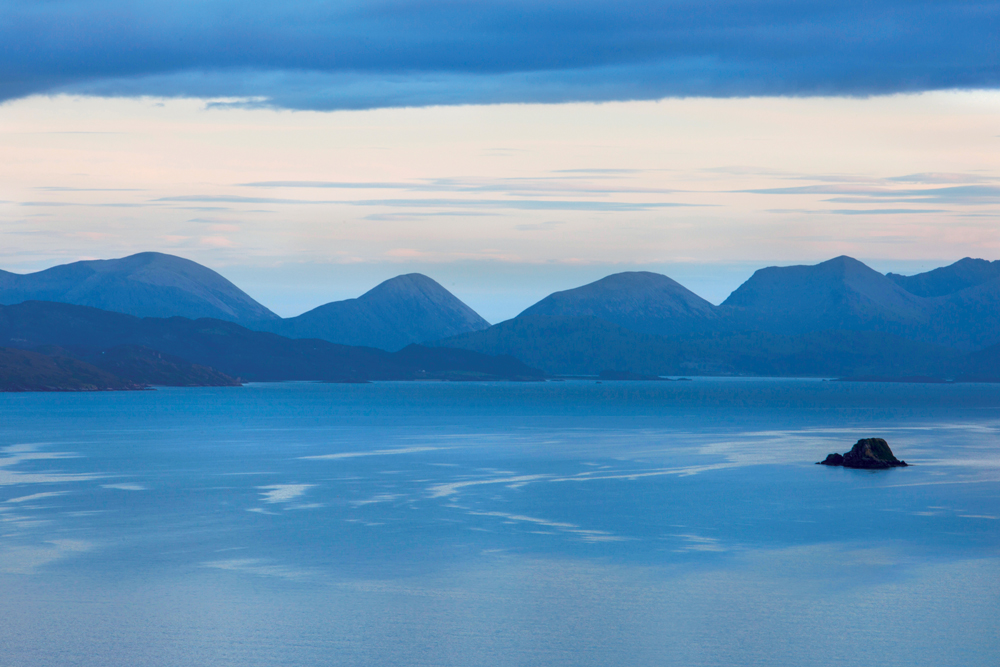
It pays to stay in an out-of-the-way place where you can really appreciate the beguiling light and the breathtaking scenery. Kinloch Lodge (kinloch-lodge.co.uk) is the best place to lay your head. The hotel is run by Lady Macdonald of Macdonald, who is famous for her cookery books and hospitality. The food and service here are second to none. The main building was once a hunting lodge of the chiefs of the Macdonald clan, and it is full of history. Portraits of Macdonald ancestors adorn the walls, and a tartan abounds throughout for that Highland feel. For those that like to arrive in style, there’s a private mooring and helipad.
Guests tend to come the first time for the loch-side setting, but they return for the outstanding food. The kitchen team, led by Marcello Tully, has been awarded three AA rosettes. Their menu lists the finest local and seasonal food. The abundant contents of the Scottish larder – including game and shellfish – change with the seasons, and Tully’s signature dishes are best appreciated by ordering from the seven-course tasting menu. The guestrooms are spacious and soothing, and many have views of the glittering loch. Getaways in Great Britain are rarely better than this.
